Introduction
Car remote keys use practical button batteries, which can generally operate for a long time, so their power consumption is very low. How do they achieve low power consumption? Let’s disassemble a Buick Excelle to take a look.
Disassembly
Use a flathead screwdriver to pry open the battery cover.
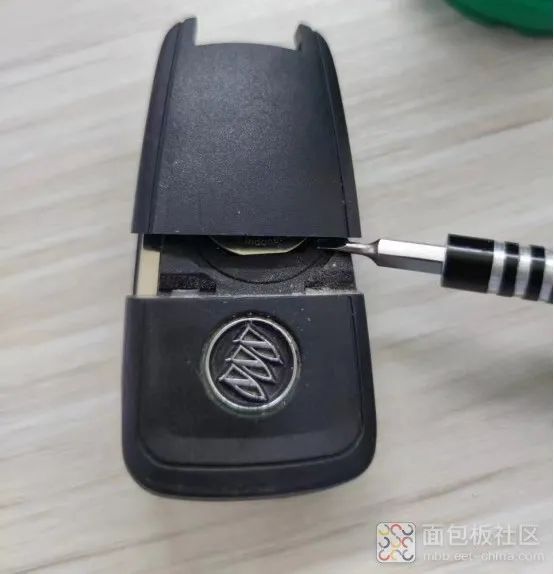
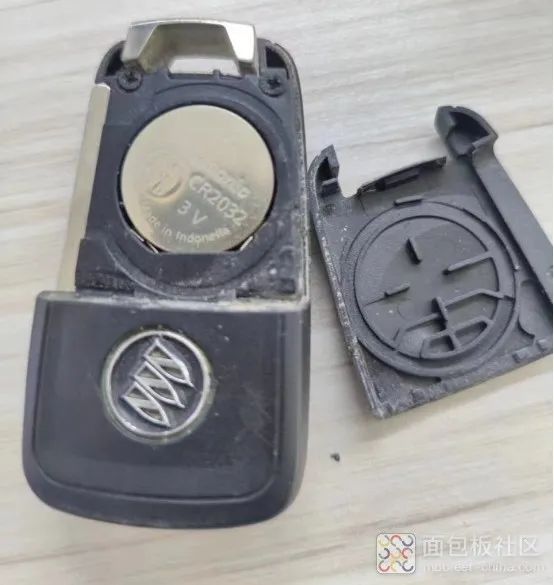
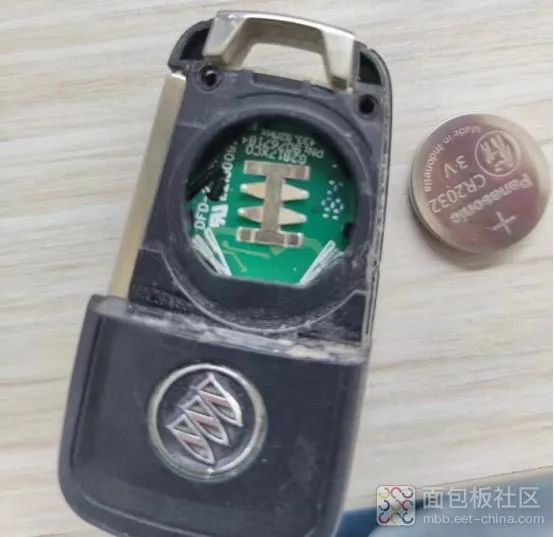
Unscrew two screws.
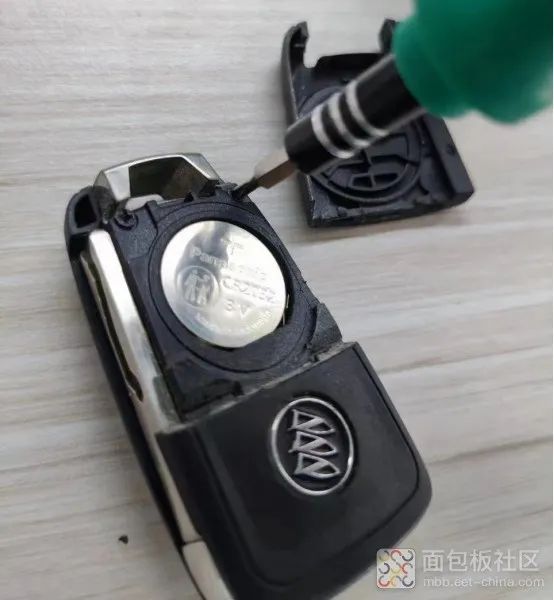
Then find that it still won’t open. Don’t worry, there is still a hidden screw under the logo.
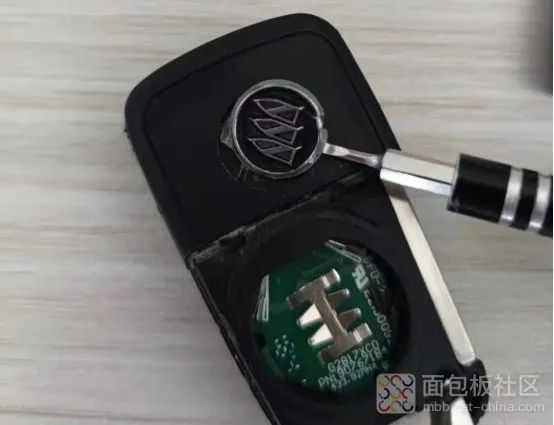
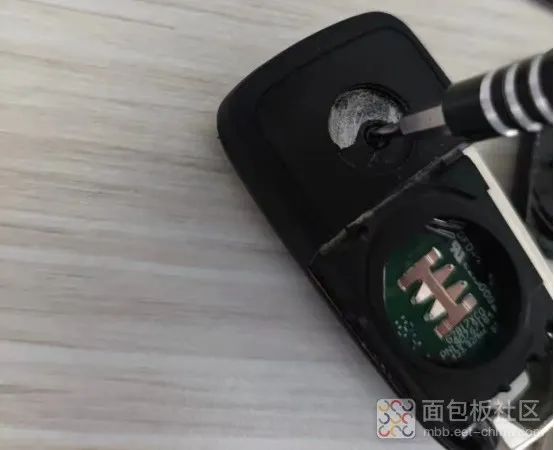
Unscrewing this screw will pop it open, and you can see the lock’s spring mechanism.
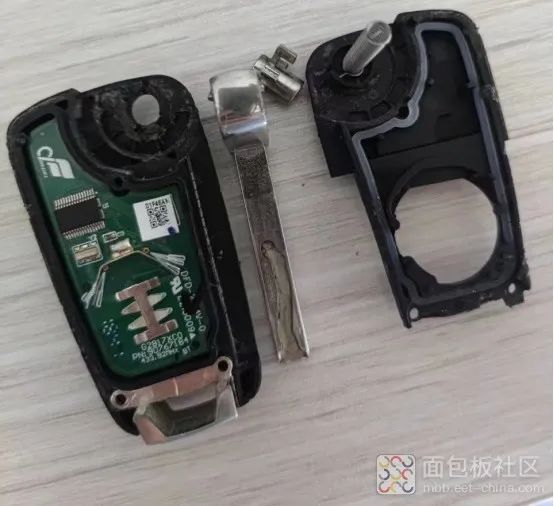
Let’s focus on the PCB.
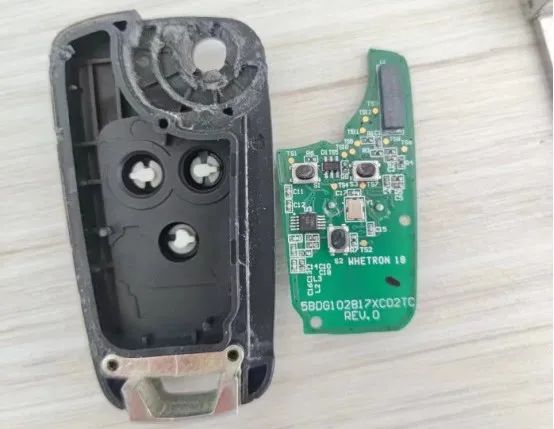
This side has the MCU and battery holder, next to it is a 32k crystal used for the RTC clock during sleep. There is a filter capacitor nearby.
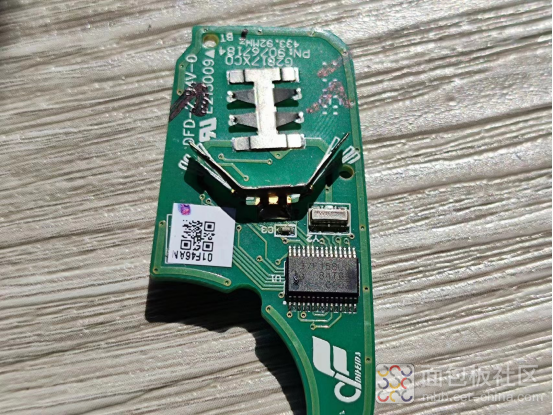
The MCU model is TMS37F158LG-84TG.
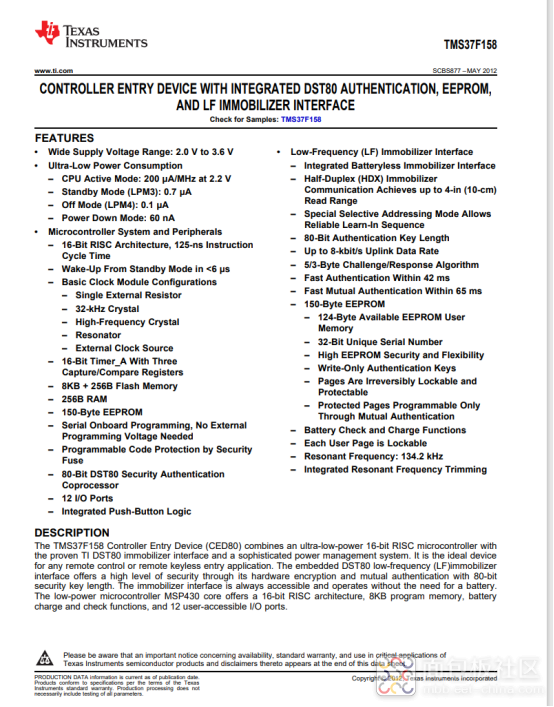
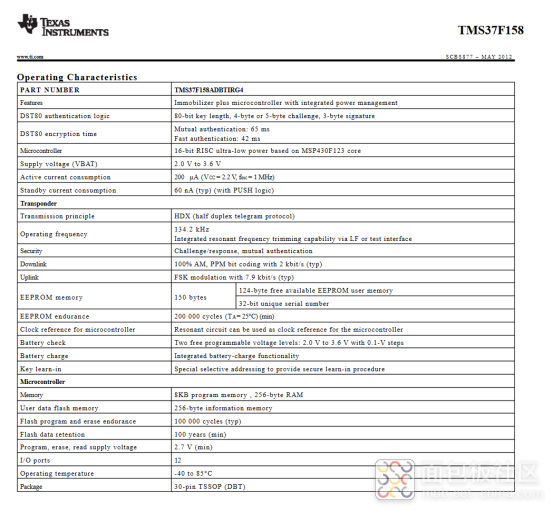
Onboard antenna.
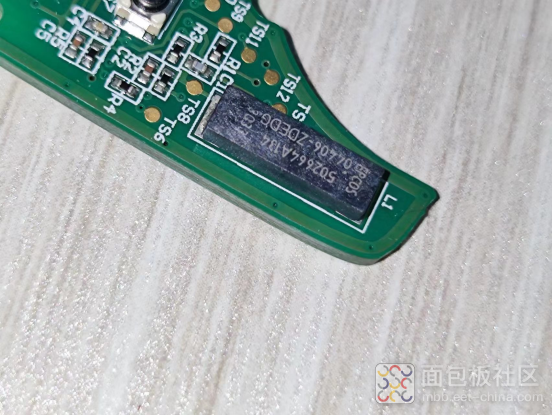
Crystal oscillator T130, temperature-compensated crystal oscillator, likely used for RF.
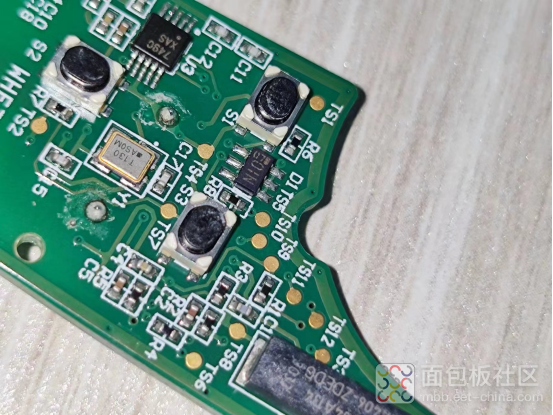
Button.
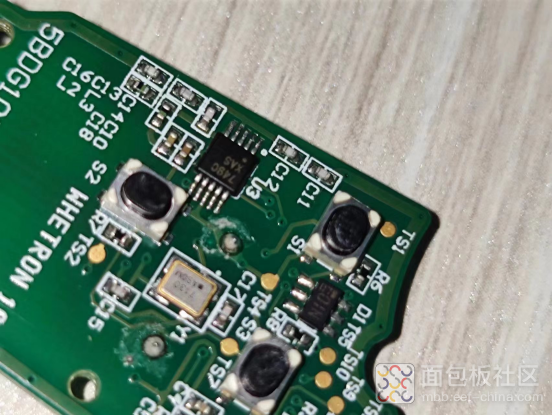
749CXAS should be the RF chip.
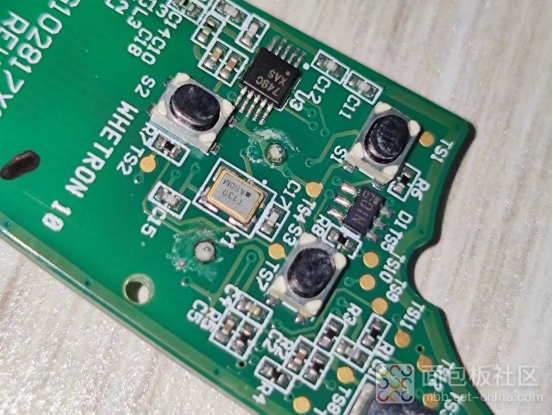
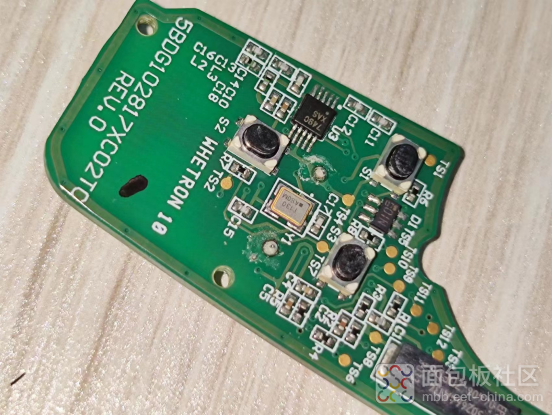
Conclusion
1. Uses dedicated low-power chips, with low operating frequency and low power consumption.
2. Simple peripheral circuits, entering sleep mode when not in use, avoiding unnecessary current consumption from pull-up and pull-down resistors.
END